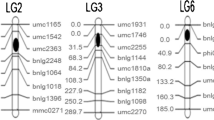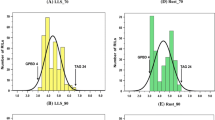Sorghum midge is the one of the most damaging insect pests of grain sorghum production worldwide. At least three different mechanisms are involved in midge resistance. The genetic bases of these mechanisms, however, are poorly understood. In this study, for the first time, quantitative trait loci associated with two of the mechanisms of midge resistance, antixenosis and antibiosis, were identified in an RI (recombinant inbred) population from the cross of sorghum lines ICSV745 × 90562. Two genetic regions located on separate linkage groups were found to be associated with antixenosis and explained 12% and 15%, respectively, of the total variation in egg numbers/spikelet laid in a cage experiment. One region was significantly associated with antibiosis and explained 34.5% of the variation of the difference of egg and pupal counts in the RI population. The identification of genes for different mechanisms of midge resistance will be particularly useful for exploring new sources of midge resistance and for gene pyramiding of different mechanisms for increased security in sorghum breeding through marker-assisted selection.
Similar content being viewed by others
Author information
Authors and Affiliations
Additional information
Electronic Publication
Rights and permissions
About this article
Cite this article
Tao, Y., Hardy, A., Drenth, J. et al. Identifications of two different mechanisms for sorghum midge resistance through QTL mapping. Theor Appl Genet 107, 116–122 (2003). https://doi.org/10.1007/s00122-003-1217-0
Received:
Accepted:
Issue Date:
DOI: https://doi.org/10.1007/s00122-003-1217-0




